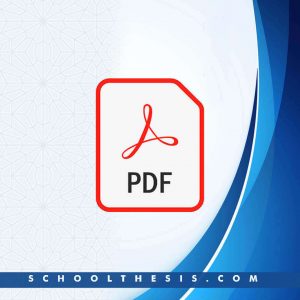Stylistic Analysis of Chiamanda Ngozi Adichie;s Half of a Yellow Sun

Stylistic Analysis of Chiamanda Ngozi Adichie;s Half of a Yellow Sun
Abstract of Stylistic Analysis of Chiamanda Ngozi Adichie;s Half of a Yellow Sun
This study is a stylistic analysis of Chimamanda Ngozi Adichie‟s novel Half Of A Yellow Sun, which comprises four parts with a total number of 37 chapters and 433 pages. The aim of this study is to identify the predominant stylistic devices used by the author in the novel and the effects achieved by using them. To achieve this aim, the researcher uses quantitative stylistic analysis which entails the counting and writing down the number of times each device occurs in the selected chapters of the novel. Review of related literature is also done. The researcher chooses this study because Half Of A Yellow Sun is Chimamanda‟s second and most voluminous novel; it is also an award winning novel and not much has been done on the stylistic analysis of the novel. 24 chapters are selected out of the 37 chapters and tables are used to represent the frequency of occurrence of the predominant stylistic devices used in the novel. Random selection sampling was used in parts two and four respectively to select six chapters from each while part one and part three are selected because they have six chapters each and need no random sampling. At the end, the predominant devices found out to be used by Chimamanda are Compound sentences followed by Compound complex sentences, Parenthetical expression, Italics, Transliteration and Code-mixing. It is then recommended that other young writers should adopt Chimamanda‟s style since the aim of studying style is to improve the vigour of one‟s writing.
Chapter One of Stylistic Analysis of Chiamanda Ngozi Adichie;s Half of a Yellow Sun
INTRODUCTION
BACKGROUND OF STUDY
Language is a tool or a code system used for human communication. It is made up of sounds or graphic symbols, which users or speakers have accepted to use as units of communication.
Language is a symbol system based on pure or arbitrary conventions infinitely extendable and modifiable according to the changing needs and conditions of the speakers.
Robins (1985).
According to Lyons (1970) Languages are:
The principal systems of communication used by particular groups of human beings within the particular society (Linguistic community) of which they are members.
The use of language is not restricted to only human beings but for the purpose of this study, the researcher is concentrating on language used by human beings. Language as a human property is used to perform various functions in a society such as communication, instruction and socialization, which is why its study is
exii
indispensable. Linguists over the years have studied languages and have actually expanded the wings of language to various levels of Linguistic analysis or description such as phonology, morphology, syntax, semantics and Discourse.
The graphic representation of sounds (speech sounds) on paper is called writing. Writing is done in different ways for various purposes and by different people. It is because of this that the study of stylistics becomes necessary and an important area to both linguists and critics.
According to Syal and Jindal (2010)
“Stylistics is that branch of linguistics which takes the language of literary texts as its object of study”.
Stylistics is the study of various styles used in literary and non – literary texts which distinguishes the uniqueness of a writer from another.
Style is a pattern of linguistic features that distinguish a piece of writing from another; it also distinguishes the personality of an author from another. No wonder the French scholar Buffon said “Style is the Man”.
exiii
Syal and Jindal (2010) opined that:
Out of the many types of variations that occur in language, it is the variation in literary style that is most complex, and thus offers unlimited scope for linguistic analysis. (61).
Stylistics is very important in Literature because each literary text represents an individual‟s use of language which reflects his unique personality, thoughts and style.
The study of literary styles shows the linguistics repertoire of a writer. We often hear of the style of Armah; the style of Milton and the simplicity that is associated with Wordsworth.
Stylistics looks at the choice of words, the sentence patterns and figurative usage of words by a writer. Figurative expressions which are sometimes called “Rhetorical Expression” helps a writer to be vivid in his description of events and ideas.
According to Ezugu:
Figures of speech, sometimes called “rhetorical” figures are expressions, phrases or words used to convey more than their ordinary literal meaning. These figures, if properly used, not only enrich but strengthen and give life to our writing.
Ezugu (2011)
exiv
Some of the features used in a achieving style include:
– Diction, figurative usage and various sentence structures such as:
– Parenthetical Expressions: These are words, clauses or even another sentence inserted at the middle or end of a sentence such as after thoughts.
– Compound Sentence: A compound sentence is one which consists of three or more simple sentences joined together by a co-ordinating conjunction or semi – colon.
– Complex Sentence: A complex sentence consists of two parts. The main clause and one or more subordinate clauses.
– Compound complex sentence: This consists of two or more main clauses and one or more subordinate clause.
Other features of style include:
– Graphology: The analysis of hand writing to interpret character and personality. Aspects of which are ”Italics, Bold sentence” and capitalization”.
exv
– Code Switching: A system of switching from one linguistic code to another.
– Code – Mixing: A systematic way of mixing two or more linguistics codes in an utterance or writing.
– Transliteration: This is the literal translation of the syntatical structure of a language into another language.
